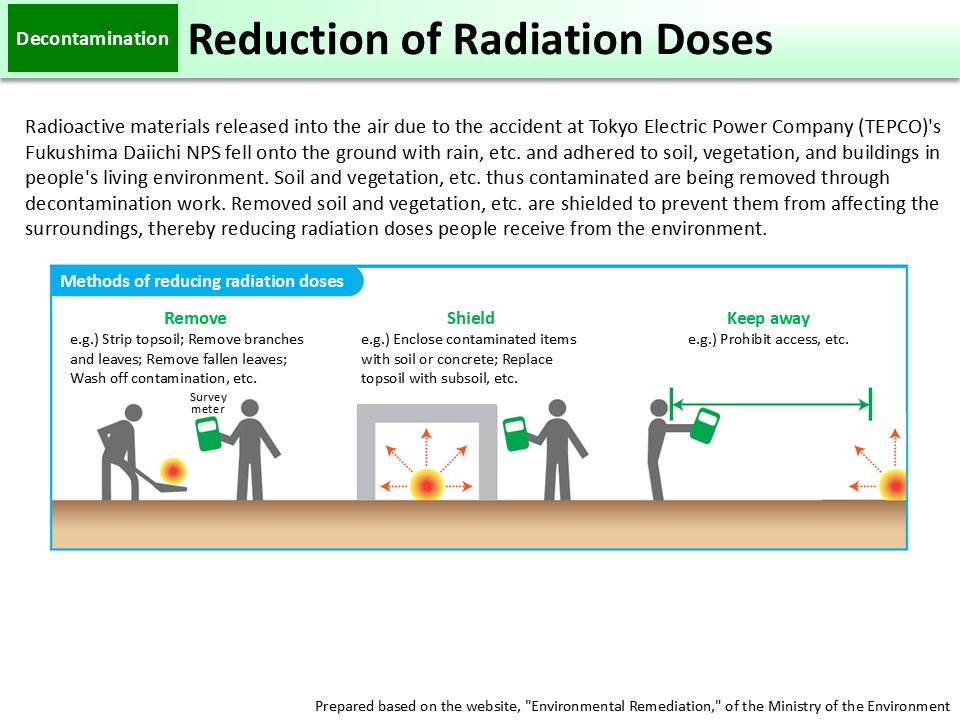Reduction of Radiation Doses
Radioactive materials released into the air due to the accident at TEPCO's Fukushima Daiichi NPS fell onto the ground with rain, etc. and adhered to buildings, soil, and vegetation, etc. across a wide area. Therefore, the national government has been striving to reduce additional exposure doses through decontamination such as removing those released radioactive materials.
There are three methods of reducing additional exposure doses to remove, to shield, and to keep away radioactive materials. Combination of these methods can reduce additional exposure doses efficiently.
The first is to remove radioactive materials adhering to soil, vegetation or buildings, etc. from people's living environment by such means as stripping topsoil, removing tree leaves, branches and fallen leaves, and washing and cleaning the surface of buildings.
The second is to cover radioactive materials with soil, etc. thereby shielding radiation and reducing ambient doses and exposure doses accordingly.
The third is to take advantage of the characteristic of radiation that the radioactivity intensity reduces as the distance increases (in inverse proportion to the square of the distance from the relevant radioactive material) (p.50 of Vol. 1, “Characteristics of External Exposure Doses”).
If radioactive materials are kept away from people, exposure doses can be reduced. Therefore, one option is to prohibit access to places where radioactive materials exist.
These methods are combined and employed to reduce people's additional exposure doses.
(Related to p.176 of Vol. 1, “Three Principles of Reduction of External Exposure”)
- Included in this reference material on March 31, 2013
- Updated on February 28, 2018

